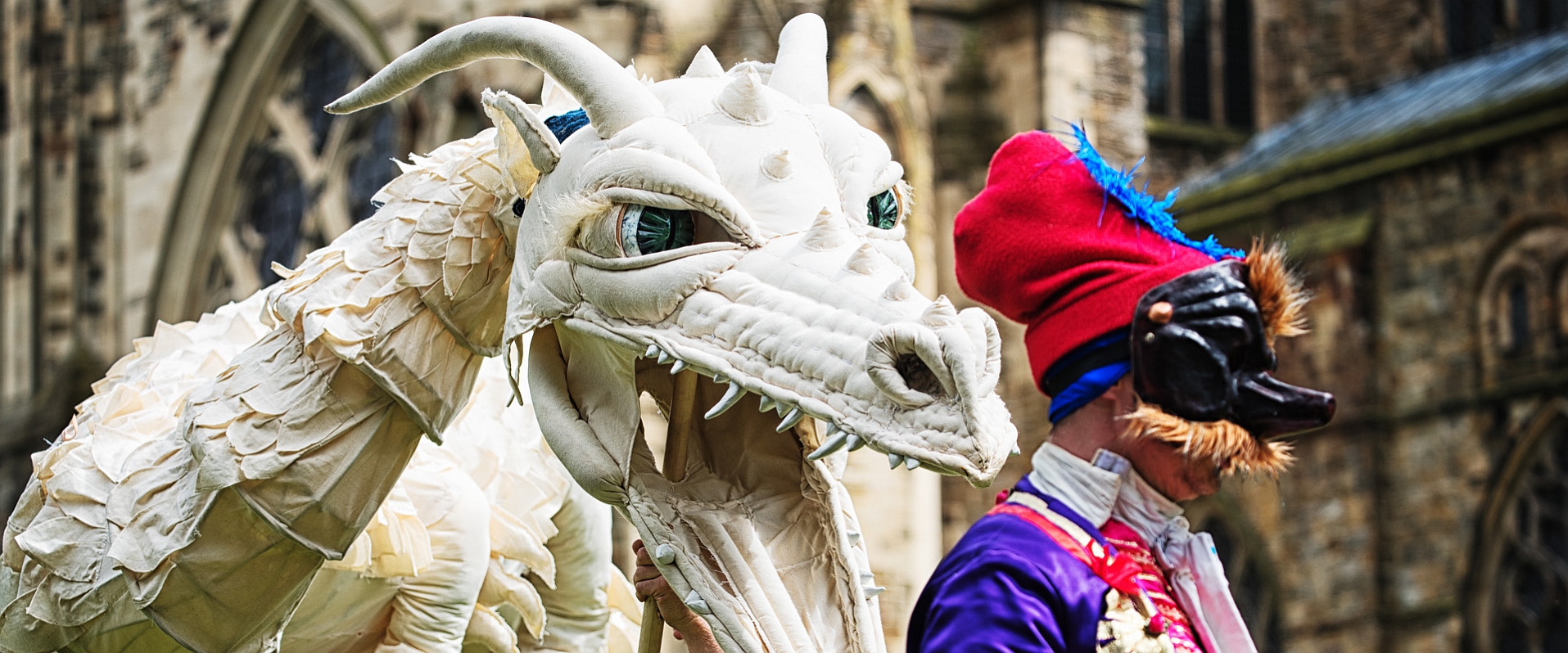Worms, serpents and stage dragons

The Durham dragons that the project team have developed were inspired by the North East’s many tales of worms and dragons. Here are a few of the stories that lay behind the resurrection of our stage dragon.
The Ethiopian dragon in Durham
In 1569, a “certain Italian” came to Durham, putting on show “a very greate, strange & monstrous serpent in length sixteene feete… greater than a great horse”. This monster came from Ethiopia, where it had “devoured more than 1000 persons and also destroyed a whole countrey”.
It was this beast – probably a stage dragon rather than a real specimen – that inspired our recreation for Theatrum Mundi.
Worms and dragons are remembered today mainly in stories, songs and poems. However, in the early modern period they were sometimes brought to life on stage. Stage dragons were paraded in civic festivals and in the theatre of the Renaissance.
The Lambton worm
One Sunda morn young Lambton went
A-fishing in the Wear
An’ catched a fish upon he’s heuk
He thowt leuk’t vary queer…
The best known local dragon is the famous Lambton Worm with its “goggly eyes,” which dwelt in the river Wear. According to the 1867 song that commemorates events, one day a young lad called Lambton went fishing and caught a small, peculiar fish; not being bothered to carry it home, Lambton then “hoyed it doon a well.” The worm subsequently grew to terrify the locals, becoming so big that could coil itself around a hill, which is sometimes said to be Penshaw but also credited as being Worm Hill in Fatfield.
Read more about the way in which the Lambton Worm (along with its rival the Sockburn Worm) was popularised in folk stories over the years in this article by project researcher, Jamie Beckett.
The Linton worm
The Linton Worm is a mythical beastie whose legend apparently dates from along the Scottish border as far back as the 12th century. The Linton Worm first makes an appearance in a Scots legend in which the writer describes the mythical serpent or dragon as being “In length three Scots yards bigger than an ordinary man’s leg – in form and callour [colour] to our common muir edders [moor adders].”
Read more about the Linton Worm.
The Bamburgh worm
At Bamburgh Castle, the beautiful lady of the house was turned into a Worm owing to the spells of a wicked, jealous queen, who eventually was turned into a toad herself as a punishment.
